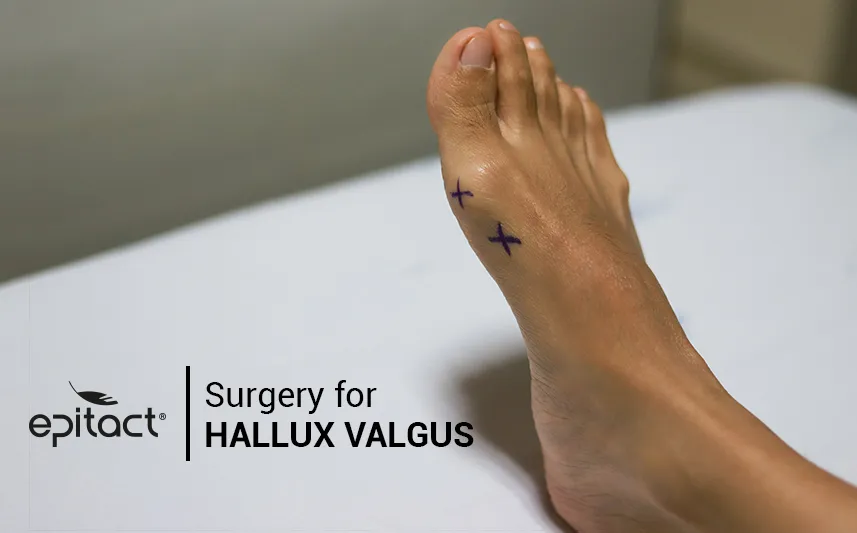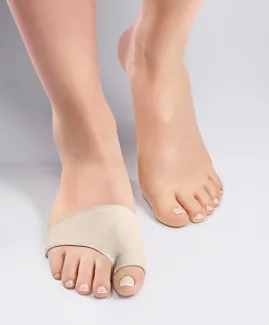
When one or more treatments proved to be ineffective to relieve the hallux valgus, more drastic measures are often considered. Should I have surgery to correct my hallux valgus? What are the risks? How to know when to have a foot surgery?
Before making an appointment with a specialist, carefully read the following information, which will guide you through the necessary steps in order to help you decide whether a surgery is required.
How to know if I should have surgery to relieve my hallux valgus?
To correct a hallux valgus, surgery is recommended as a last resort, various other treatments should be considered first. Your general practitioner or podiatrist can help identify which options are most appropriate for you.
People with a mild hallux valgus should only require massages with essential oils and rehabilitation exercises. Wearing a bunion protector* will fight against the progression of this condition. EPITACT® offers silicone protections designed to minimise rubbing whilst against footwear. This particularly thin protection, made from an ultra-comfortable fabric, can be put on like socks and worn without discomfort in any type of footwear.
For moderate to severe hallux valgus, the bunion protector for use throughout the day* and the bunion shield for use at night* enable realignment of the toe, allowing for more comfort whilst wearing shoes. EPITACT® has even developed a bunion straightener for sport activities*!
If wearing these medical devices appears to be insufficient after several months, surgery may be considered. A specialist will perform a clinical examination in order to confirm this hypothesis.
The decision whether to have surgery for hallux valgus depends on many factors, of which also determine the surgical procedure. The foot morphology, age, gender, severity of the condition, its progression and speed of evolution will all play a part in the final decision. The potential reluctance of the patient must also be considered, as it is crucial for surgery success, specifically during the convalescence period. If you do not trust your specialist, feel free to ask for a second opinion, this will reassure you and aid with your decision.
The way you adapt your behaviour (for example footwear habits and weight...) will influence this decision. Finally, the intensity of your practice, your sporting ambitions and their related risks will also need to be considered. Even if they are quite uncommon, risk of complications according to each case are still possible. If you feel ready to accept it, the final decision will be easier to make. At last, the season may impact your choice. Spring and summer seasons are recommended to undergo the convalescence period, if possible, due to the higher likelihood of being able to wear open-toe or light shoes.
Anaesthesia and hospitalisation duration
Nowadays, most surgeries to correct hallux valgus are performed under locoregional anaesthesia. The evolution of the condition, as well as the additional techniques employed, will vary the duration of the operation from 30 to 60 minutes.
Hospitalisation is also brief, most of the time on an outpatient basis, which means in one day.
However, without any behavioural change, recurrence risks are possible. Wearing silicone protections for hallux valgus* will reduce these risks by limiting frictions and pressures.
*These products are class I medical devices that bear the CE marking under this regulation. Carefully read the instructions before use. Manufacturer: Millet Innovation. 04/2021
 Pharmacie
Pharmacie


